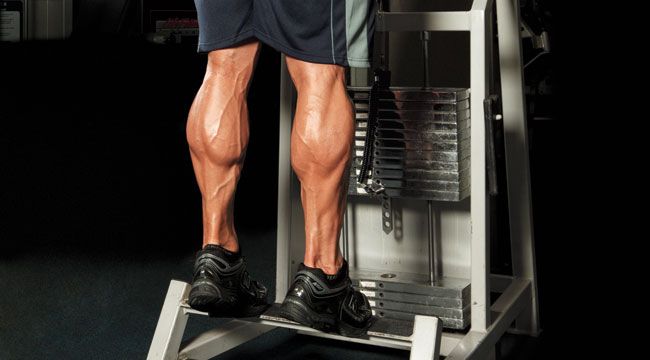Strong calves are an important component of a strong and healthy body because you need your calves to perform nearly every other fitness activity you could think of, from running, to lifting weights or playing a sport. You probably have already realized this and perhaps you’ve already started training your calves; but so many people makes some basic mistakes with calf training, that end up inhibiting the amount of gains they make. We want you to make the most of your calf training, though, so we’ve put together this list of the top 3 mistakes people make when they train their calves. Read on to make sure you’re training your calves in the best way.

-
Insufficiently intensity
Calves are muscles that require an unusually high level of intensity, because they are one of the most used muscles on a daily basis. Almost every motion you make relies on the calves, in part, to sponsor its execution; from the thousands of steps you take each day and even when performing other exercises such as running, squats or weight lifting, your calves play a major role. This of course, means that even if they might not exactly be the size of balloons, your calves are very developed and strong, which then means that if you want to experience visible calf growth, your calf exercises will have to be more intense.
-
Failure to stretch well
With extremely repetitive exercise motions such as calf raises, it can be easy to lose a bit of concentration and start going through the motions without making sure you achieve the full range of motion on each stretch. This is the fastest way to waste your time doing hundreds of calf raises without any marked benefit.
The reason why going through the full range of stretching on each calf raise is so important is that muscles are surrounded by a protective sack called fascia, which does not grow as fast muscles do when you exercise; however, fascia can be stimulated to expand by proper stretching. Most calf exercises are unique because unlike other strength building exercises that focus on creating minuscule tears in the muscles, they also simulate stretch moves which means they also cause the fascia that surround muscles to grow.
In general, you should perform calf raises with slow and steady movements, hold the extended position (both when you’re standing on your toes and when your heel dips) for at least one-two seconds.
-
Focusing on the gastrocnemius alone
The gastrocnemius is the very visible calf muscle that forms a bulge at the back of the tibia. A common mistake a lot of people make is doing calf exercises in such a way that this muscle is targeted at the expense of others. Needless to say this a major mistake. Other important muscles in the calf area include the soleus and tibialis anterior—the opposing muscle to the gastrocnemius and soleus muscles.
Seated calf raises will effectively target both the gastrocnemius and soleus muscles and you can do seated or standing reverse calf raises to work on your tibialis anterior.
Conclusion
The calve muscles are a somewhat complicated muscle to develop and you can easily spend a lot of time and energy without seeing much gains in strength or size; but if you follow these sure tips, you are sure to see some impressive results.
WhatsApp number: +971 565 830 067 (Just send us code 3660 and we will get back to you ASAP)
Contact Us: Click here to send us your details or fill in the form below.
You can get in touch with us 24/7 and one of our experts will not only give you a free consultation but also help you pick out an appropriate male or female personal trainer to meet your needs. One-on-one personal training lessons are available in Dubai, Abu Dhabi, Sharjah, Ajman and RAK.
______________________________________________________________